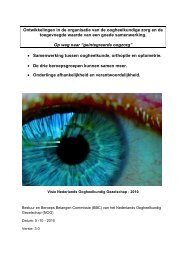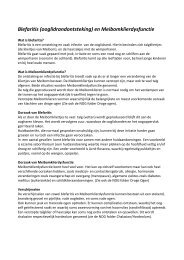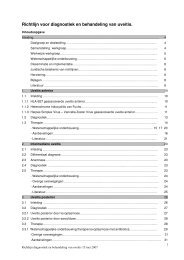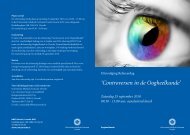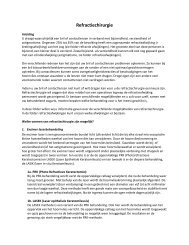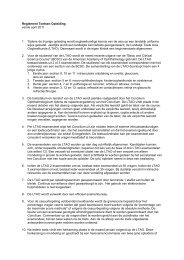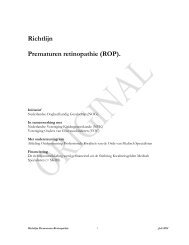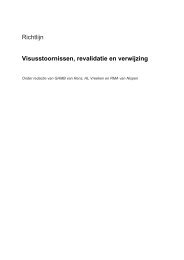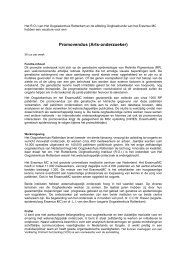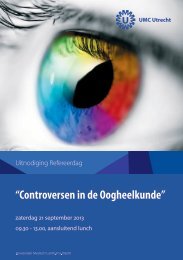terminology and guidelines for glaucoma ii - Kwaliteitskoepel
terminology and guidelines for glaucoma ii - Kwaliteitskoepel
terminology and guidelines for glaucoma ii - Kwaliteitskoepel
You also want an ePaper? Increase the reach of your titles
YUMPU automatically turns print PDFs into web optimized ePapers that Google loves.
Direct Gonioscopy<br />
The use of a contact goniolens like the Koeppe lens permits the light from the anterior chamber to pass through the<br />
cornea so that the angle may be viewed.<br />
Some peculiarities of this technique are:<br />
Patients must lie on their back<br />
Gives a direct view of the anterior chamber angle<br />
Good magnification<br />
Easy orientation <strong>for</strong> the observer<br />
Possible simultaneous comparison of both eyes<br />
Requires high magnification whit illuminated loupes or portable<br />
slit-lamp<br />
Angle view possible with direct ophthalmoscope by dialing<br />
high plus lens<br />
Indirect Gonioscopy<br />
The light from the anterior chamber is made to exit via a mirror built into a contact glass.<br />
Some peculiarities of this technique are:<br />
Patient must be at the slit lamp<br />
Indirect view of the anterior chamber angle<br />
Faster than direct gonioscopy during routine ophthalmological<br />
exam<br />
It can be used to see the fundus (using the central part of the<br />
lens) at the slit lamp.<br />
Inability to compare the two eyes simultaneously<br />
The most common Gonioscopy lenses:<br />
Direct<br />
Koeppe (contact fluid required)<br />
Layden (sized <strong>for</strong> infants; contact fluid required)<br />
Worst<br />
Indirect<br />
Posner or Zeiss or Sussman 4 mirror (contact fluid not required)<br />
Goldmann lens, 1 to 4 mirrors (contact fluid required)<br />
CGA 1.4 © Lasag (contact fluid required)<br />
Ch. 1 - 10 EGS



